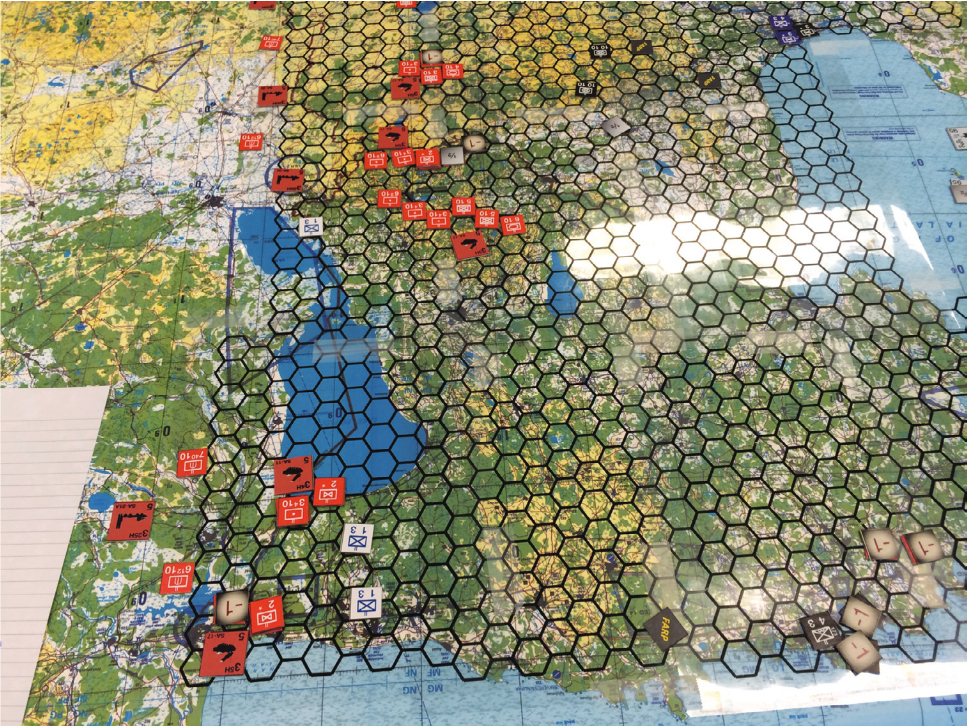
RAND has published a new report by analysts David A. Shlapak and Michael Johnson detailing their assessment of the threat to the Baltic republics of conventional invasion by Russian military forces. The conclusions of the study are sobering — that NATO could do little to prevent Russian military forces from effectively overrunning Latvia and Estonia in as few as 60 hours. Their analysis should provide plenty of food for thought.
Just as interesting, however, is that Shlapak and Johnson used old-style paper wargaming techniques to facilitate their analysis. The image above of their home-designed wargame above should warm the cockles of any Avalon Hill or SPI board wargame enthusiast of a certain age. As to why they chose this approach, they stated:
RAND developed this map-based tabletop exercise because existing models were ill-suited to represent the many unknowns and uncertainties surrounding a conventional military campaign in the Baltics, where low force-to-space ratios and relatively open terrain meant that maneuver between dispersed forces—rather than pushing and shoving between opposing units arrayed along a linear front—would likely be the dominant mode of combat.
While they did state that they used rules and tables governing movement and combat based on “offline modeling,” it is very curious that they did not find any of the many sophisticated Defense Department computer models and simulations available to be suitable for their task. They outline their methodology in an appendix, but promise to provide a fuller report at a later date.

Warming the cockles indeed! I’ll have to study what they did in detail, but I wonder how it compares to the opinion of General Scales, as published in the WSJ (link below)? Basically the conclusion was to use pre-positioned heavy equipment and rapid deployment of troops if a conflict erupts. How might this Cold War strategy (perhaps more operational than strategic?) be challenged by Russian hybrid warfare, designed to sow confusion? Also, how did they model the air campaign, which would undoubtedly see some fiercely fought battles for air superiority.
Thanks Dr. Woodford for this great find!
http://www.wsj.com/articles/our-precarious-defenses-in-europe-1448833504
My cockles were indeed warmed by that photo. All the drawbacks of the table-top gaming format aside, just working out the movement rates and combat strengths of the units involved, based on the scale of the hexes on the overlay and using some system like the QJM, would be a complete blast. Just like the old days!